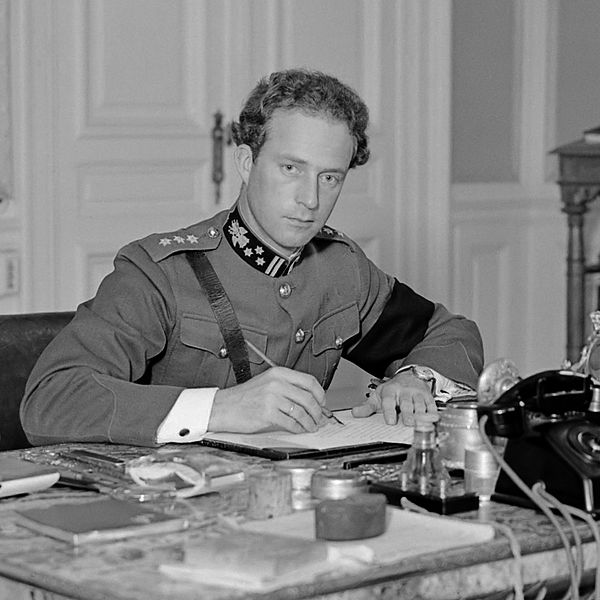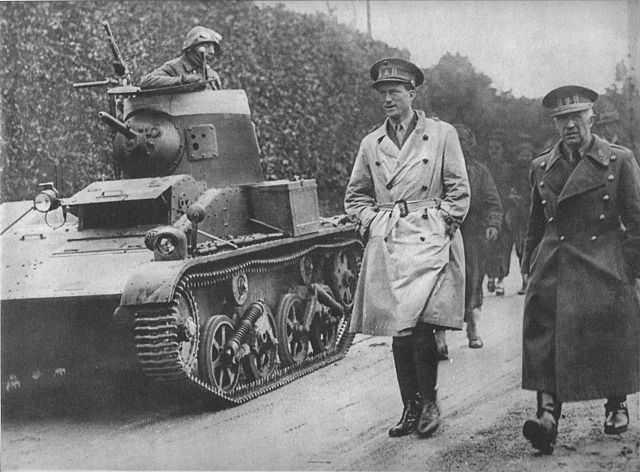The Bataillon de Chasseurs Ardennais is an infantry formation in the Land Component of the Belgian Armed Forces. Originally formed in 1933 to ensure the defense of Belgium's Luxembourg Province including the natural region of the Ardennes and particularly noted for its role during the German invasion of 1940, the unit currently serves as a mechanized infantry formation and forms part of the Motorized Brigade.
Cap badge depicting the head of a wild boar
A modern view of a concrete shelter in the Ligne Devèze [fr] near Arlon along the south-eastern border with Germany and Luxembourg created as part of the policy for the "integral defense of the territory" before its abandonment in 1936.
Chasseurs ardennais pictured in the interwar years, wearing the units' distinctive green berets, carrying Hotchkiss machine guns
Monument commemorating the resistance by the 5th Regiment of Chasseurs ardennais at the bridge over the Meuse river at Yvoir (Province of Namur) on 10-12 May 1940
German invasion of Belgium (1940)
The invasion of Belgium or Belgian campaign, often referred to within Belgium as the 18 Days' Campaign, formed part of the larger Battle of France, an offensive campaign by Germany during the Second World War. It took place over 18 days in May 1940 and ended with the German occupation of Belgium following the surrender of the Belgian Army.
Belgian soldiers under German guard following the fall of Fort Eben-Emael on 11 May 1940
A pacifist rally in Heysel, near Brussels, in 1936
King Leopold III, Belgian head of state, an advocate of the policy of neutrality
Leopold III, Belgium's monarch from 1934, reviewing Belgian troops in early 1940


![A modern view of a concrete shelter in the Ligne Devèze [fr] near Arlon along the south-eastern border with Germany and Luxembourg created as part of](https://upload.wikimedia.org/wikipedia/commons/thumb/d/dd/Abri_Dev%C3%A8ze_Arlon_Weyler.jpg/640px-Abri_Dev%C3%A8ze_Arlon_Weyler.jpg)





